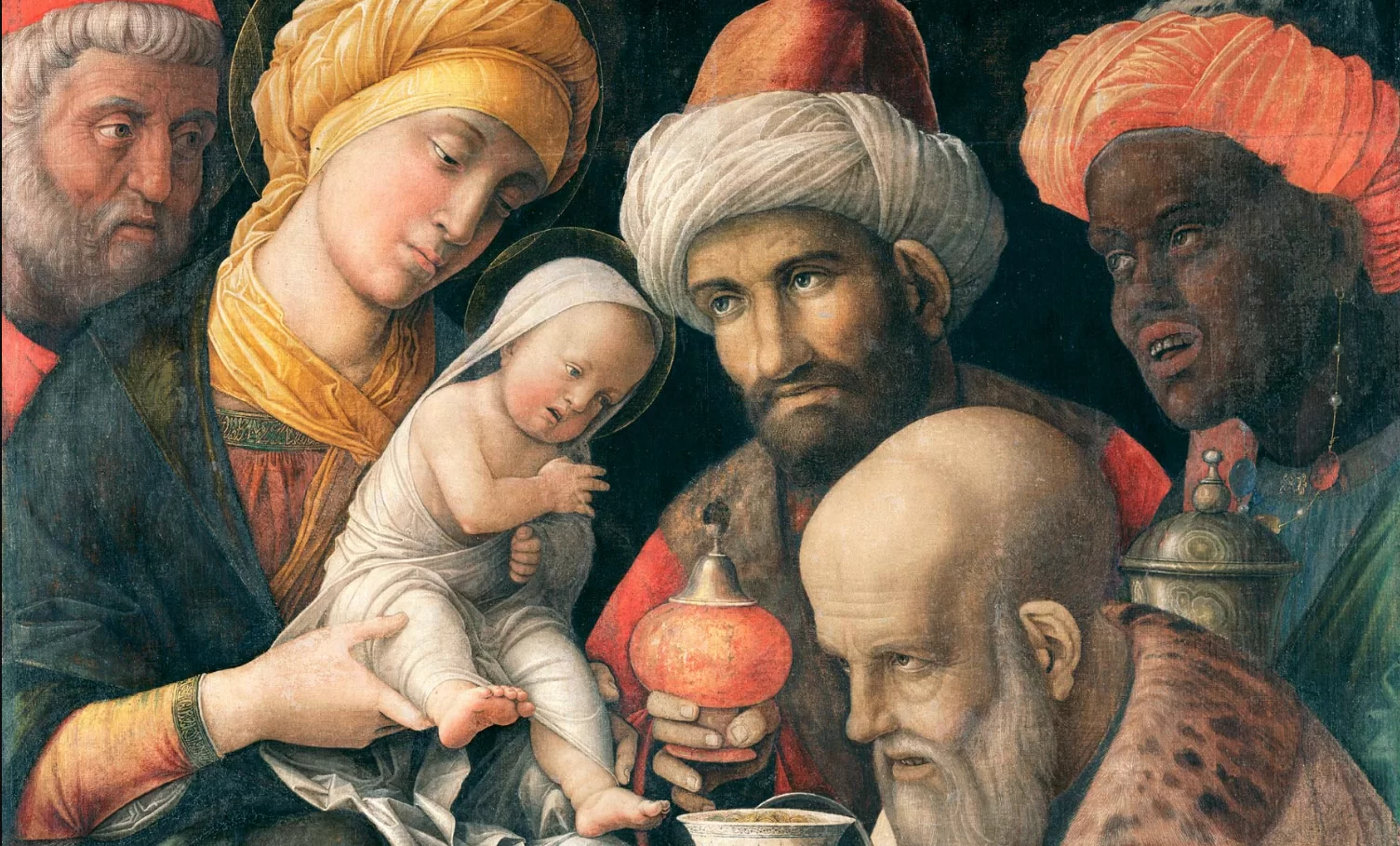
By Staff Reporter
In 1985, Mantegna’s masterpiece, The Adoration of the Magi became the most expensive old Master painting ever sold at Christie’s (at the time for £8.1 million).
The Adoration of the Magi or Uffizi Triptych is a group of three tempera-on-panel paintings by Andrea Mantegna, dating to around 1460. Their three subjects are the Ascension of Christ (86 by 42.5 cm), Adoration of the Magi the largest and central panel (76 by 76.5 cm) and the Circumcision of Christ (86 by 42.5 cm). They were gathered as a trio in the 19th century, although some art historians doubt that they were created as a triptych set in the way they are now arranged. They are now in the Uffizi Gallery in Florence.

Mantegna’s first important commission from Ludovico Gonzaga was the decoration of the chapel in Castello di San Giorgio, executed in the first half of the 1460s. It is unfortunately impossible to reconstruct the whole of Mantegna’s original intentions there with any confidence, although some panels almost certainly traceable to the chapel still survive.
Together with The Ascension and The Circumcision, the Adoration of the Magi forms a triptych created in 1827 at the Uffizi, where the picture can still be seen. The three works were acquired by the Medici in 1588 by the Gonzaga, whose member Ludovico had commissioned them to Mantegna in the 1460s for the Chapel of the Castle of St. George in Mantua (together with the Death of the Virgin, now in the Museo del Prado).
The panel with the Adoration of the Magi was probably located in the chapel’s apse. The Magi are depicted while descending to the Child’s grotto from a path carved out in the rock. The Virgin is portrayed with a crown of angels, according to a Byzantine model.
The Getty Museum’s magnificent painting by Mantegna, The Adoration of the Magi, is based on one of Christianity’s most beloved stories: the arrival of the gift-bearing Wise Men at the newborn Jesus’ crib in a manger in Bethlehem. The picture is much more than a Christmas-card image, however. Influenced by the presence of classical Roman relief sculpture in his native Padua, Mantegna depicts the Christ Child blessing the three kings in the presence of his simply attired mother, the Virgin Mary, and Joseph, her husband. The Wise Men, portrayed against a neutral background, are exotically clothed. The bearded, bareheaded and reverential Caspar gives Jesus a Chinese porcelain cup full of gold coins. Next to him stands the youthful Melchior with a Turkish jasper censer rich in aromatic frankincense. The covered agate vessel held by Balthasar contains myrrh, an East African and Arabian tree resin used in ancient perfumes and ointments.
Three kings pay homage to the Christ Child, who in turn makes a sign of blessing. Jesus Christ, his mother the Virgin Mary, and Mary’s husband Joseph have haloes and wear simple garments, while the Magi are dressed in exotic clothing and jewels and bear exquisite gifts. Caspar, bearded and bareheaded, presents the Christ Child with a rare Chinese cup, made of delicate porcelain and filled with gold coins. Melchior, the younger, bearded king behind Caspar, holds a Turkish censer for perfuming the air with incense; on the right, Balthasar the Moor carries a covered cup made of agate.
Andrea Mantegna’s composition of figures and objects compressed within a shallow space was based on his study of ancient Roman reliefs. He used a neutral background and sharply defined details to focus the viewer’s attention on the kings’ adoration of Christ
The subject of Adoration of the Magi was one of the most popular in all fifteenth-century art, especially for the opportunities it presented for the display of rich costumes and accessories, and of numerous subordinate figures with horses and other animals in an extensive landscape. Mantegna, however, restricts his composition to just six figures – with the three magi on the right converging on the three members of the Holy Family on the left – which he shows in half-length, and hence, too, in powerfully expressive close-up. Four decades earlier, when still working as a young man in Padua, Mantegna had introduced this type of half-length devotional narrative into Italian painting with his Presentation in the Temple.
It was suggested that this painting was executed for Isabella d’Este, the consort of Marquis Francesco Gonzaga.

Andrea Mantegna
Andrea Mantegna (c. 1431 – September 13, 1506) was a North Italian Renaissance painter, a student of Roman archeology, and son in law of Jacopo Bellini. Like other artists of the time, Mantegna experimented with perspective, e.g., by lowering the horizon in order to create a sense of greater monumentality. His flinty, metallic landscapes and somewhat stony figures give evidence of a fundamentally sculptural approach to painting. He also led a workshop that was the leading producer of prints in Venice before 1500.
Mantegna was born in Isola di Carturo, close to Padua in the Republic of Venice, second son of a carpenter, Biagio. At the age of eleven he became the apprentice of Francesco Squarcione, Paduan painter. Squarcione, whose original vocation was tailoring, appears to have had a remarkable enthusiasm for ancient art, and a faculty for acting. Like his famous compatriot Petrarca, Squarcione was something of a fanatic for ancient Rome: he travelled in Italy, and perhaps Greece, amassing antique statues, reliefs, vases, etc., forming a collection of such works, then making drawings from them himself, and throwing open his stores for others to study. All the while, he continued undertaking works on commission for which his pupils no less than himself were made available.
As many as 137 painters and pictorial students passed through Squarcione’s school, which had been established towards 1440 and which became famous all over Italy. Padua was attractive for artists coming not only from Veneto but also from Tuscany, such as Paolo Uccello, Filippo Lippi and Donatello. Mantegna’s early career was shaped indeed by impressions of Florentine works. At the time, Mantegna was said to be a favorite pupil; Squarcione taught him the Latin language, and instructed him to study fragments of Roman sculpture. The master also preferred forced perspective, the lingering results of which may account for some of Mantegna’s later innovations. However, at the age of seventeen, Mantegna separated himself from Squarcione. He later claimed that Squarcione had profited from his work without paying the rights.
His first work, now lost, was an altarpiece for the church of Santa Sofia in 1448. The same year Mantegna was called, together with Nicolò Pizolo, to work with a large group of painters entrusted with the decoration of the Ovetari Chapel in the transept of the church of the Eremitani. It is probable, however, that before this time some of the pupils of Squarcione, including Mantegna, had already begun the series of frescoes in the chapel of S. Cristoforo, in the church of Sant’Agostino degli Eremitani, today considered his masterpiece. After a series of coincidences, Mantegna finished most of the work alone, though Ansuino, who collaborated with Mantegna in the Ovetari Chapel, brought his style in the Forlì school of painting. The now censorious Squarcione carped about the earlier works of this series, illustrating the life of St James; he said the figures were like men of stone, and had better have been colored stone-color at once.
This series was almost entirely lost in the 1944 allied bombings of Padua. The most dramatic work of the fresco cycle was the work set in the worm’s-eye view perspective, St. James Led to His Execution. (For an example of Mantegna’s use of a lowered view point, see the image at right of Saints Peter and Paul; though much less dramatic in its perspective than the St. James picture, the San Zeno altarpiece was done shortly after the St. James cycle was finished, and uses many of the same techniques, including the classicizing architectural structure.)
The sketch of the St. Stephen fresco survived and is the earliest known preliminary sketch which still exists to compare to the corresponding fresco. Despite the authentic look of the monument, it is not a copy of any known Roman structure. Mantegna also adopted the wet drapery patterns of the Romans, who derived the form from the Greek invention, for the clothing of his figures, although the tense figures and interactions are derived from Donatello. The drawing shows proof that nude figures were used in the conception of works during the Early Renaissance. In the preliminary sketch, the perspective is less developed and closer to a more average viewpoint however.
Among the other early Mantegna frescoes are the two saints over the entrance porch of the church of Sant’Antonio in Padua, 1452, and an altarpiece of St. Luke and other saints (at left) for the church of S. Giustina, now in the Brera Gallery in Milan (1453). As the young artist progressed in his work, he came under the influence of Jacopo Bellini, father of the celebrated painters Giovanni and Gentile, and of a daughter Nicolosia. In 1453 Jacopo consented to a marriage between Nicolosia and Mantegna.
In 1453, Mantegna married Jacopo Bellini’s daughter. Both he and his new brother in law, Giovanni Bellini, used a drawing of Jacopo’s as a basis for an Agony in the Garden (c 1455, both London, National Gallery): a comparison of the two reveals the fundamental difference between Mantegna’s sculptural conception and the new conception, that of forms modelled by colour and light, their edges softened by atmosphere, that Giovanni was to evolve for Venetian painting.
Andrea seems to have been influenced by his old preceptor’s strictures, although his later subjects, for example, those from the legend of St. Christopher, combine his sculptural style with a greater sense of naturalism and vivacity. Trained as he had been in the study of marbles and the severity of the antique, Mantegna openly avowed that he considered ancient art superior to nature as being more eclectic in form. As a result, the painter exercised precision in outline, privileging the figure. Overall, Mantegna’s work thus tended towards rigidity , demonstrating an austere wholeness rather than graceful sensitivity of expression. His draperies are tight and closely folded, being studied (it is said) from models draped in paper and woven fabrics gummed in place. His figures are slim, muscular and bony; the action impetuous but of arrested energy. Finally, tawny landscape, gritty with littering pebbles, marks the athletic hauteur of his style.
Mantegna never changed the manner which he had adopted in Padua, though his coloring—at first neutral and undecided—strengthened and matured. Throughout his works there is more balancing of color than fineness of tone. One of his great aims was optical illusion, carried out by a mastery of perspective which, though not always mathematically correct, attained an astonishing effect in those times.
Successful and admired though he was there, Mantegna left his native Padua at an early age, and never resettled there again; the hostility of Squarcione has been assigned as the cause. He spent the rest of his life in Verona, Mantua and Rome; it has not been confirmed that he also stayed in Venice and Florence. In Verona around 1459, he painted, a grand altarpiece for the church of San Zeno Maggiore, a Madonna and angels, with four saints on each side.
Work in Mantua
The Marquis Ludovico II Gonzaga of Mantua had for some time been pressing Mantegna to enter his service, and the following year, in 1460 Mantegna was appointed court artist. He resided at first from time to time at Goito, but, from December 1466 onwards, he moved with his family to Mantua. His engagement was for a salary of 75 lire a month, a sum so large for that period as to mark conspicuously the high regard in which his art was held. He was in fact the first painter of any eminence ever domiciled in Mantua.
His Mantuan masterpiece was painted in the apartment of the Castle of the city, today known as Camera degli Sposi (literally, “Wedding Chamber”): a series of full compositions in fresco including various portraits of the Gonzaga family and some figures of genii.
The Chamber’s decoration was finished presumably in 1474. The ten years that followed were not happy ones for Mantegna and Mantua: his character grew irritable, his son Bernardino died, as well as the marquis Ludovico, his wife Barbara and his successor Federico (who had declared Mantegna cavaliere, “knight” ). Only with the election of Francesco II of Gonzaga did the artistic commissions in Mantua begin again. He built a stately house in the area of the church of San Sebastiano, and adorned it with a multitude of paintings. The house can be still seen today, although the pictures have perished. In this period he began to collect some ancient Roman busts (which were donated to Lorenzo de Medici when the Florentine leader visited Mantua in 1483), painted some architectonic and decorative fragments, and finished the intense St. Sebastian now in the Louvre (box at top).
In 1488 Mantegna was called by Pope Innocent VIII to paint frescos in a chapel Belvedere in the Vatican. This series of frescos, including a noted Baptism of Christ, was destroyed by Pius VI in 1780. The pope treated Mantegna with less liberality than he had been used to at the Mantuan court; but all things considered their connection, which ceased in 1500, was not unsatisfactory to either party. Mantegna also met the famous Turkish hostage Jem and studied with attention the ancient monuments, but his impression of the city was a disappointing one as a whole. Returned to Mantua in 1490, he embraced again his more literary and bitter vision of antiquity, and entered in strong connection with the new marquise, the cultured and intelligent Isabella d’Este.
In what was now his city he went on with the nine tempera pictures of the Triumphs of Caesar, which he had probably begun before his leaving for Rome, and which he finished around 1492. These superbly invented and designed compositions are gorgeous with the splendour of their subject-matter, and with the classical learning and enthusiasm of one of the master-spirits of the age. Considered Mantegna’s finest work, they were sold in 1628 along with the bulk of the Mantuan art treasures to King Charles I of England. They are now in Hampton Court Palace, somewhat faded, but many repaintings have been removed in a recent restoration. His workshop produced a series of engravings after them, which largely account for their rapid fame throughout Europe.
Later years
In spite of declining health, Mantegna continued to be active. Other works of this period include the Madonna of the Caves, the St. Sebastian and the famous Lamentation over the Dead Christ, probably painted for his personal funerary chapel. Another work of Mantegna’s later years was the so-called Madonna della Vittoria, now in the Louvre. It was painted in tempera about 1495, in commemoration of the Battle of Fornovo, whose disputable outcome Francesco Gonzaga was eager to show as an Italian League victory; the church which originally housed the picture was built from Mantegna’s own design. The Madonna is here depicted with various saints, the archangel Michael and St. Maurice holding her mantle, which is extended over the kneeling Francesco Gonzaga, amid a profusion of rich festooning and other accessory. Though not in all respects of his highest order of execution, this counts among the most obviously beautiful and attractive of Mantegna’s works from which the qualities of beauty and attraction are often excluded, in the stringent pursuit of those other excellences more germane to his severe genius, tense energy passing into haggard passion.
After 1497 Mantegna was commissioned by Isabella d’Este to translate the mythological themes written by the court poet Paride Ceresara into paintings for her private apartment (studiolo) in the Palazzo Ducale. These paintings were dispersed in the following years: one of them, the legend of the God Comus, was left unfinished by Mantegna and completed by his successor as court painter in Mantua, Lorenzo Costa.
After the death of his wife, Mantegna became at an advanced age the father of a natural son, Giovanni Andrea; and at the last, although he continued launching out into various expenses and schemes, he had serious tribulations, such as the banishment from Mantua of his son Francesco, who had incurred the marquis’ displeasure. Perhaps the aged master and connoisseur regarded as barely less trying the hard necessity of parting with a beloved antique bust of Faustina.
Very soon after this transaction he died in Mantua, on September 13, 1506. In 1516, a handsome monument was set up to him by his sons in the church of Sant’Andrea, where he had painted the altar-piece of the mortuary chapel. The dome is decorated by Correggio.
Giorgio Vasari eulogizes Mantegna, although pointing out his litigious character. He had been fond of his fellow-pupils at Padua: and for two of them, Dario da Trevigi and Marco Zoppo, he retained a steady friendship. Mantegna became very expensive in his habits, fell at times into difficulties, and had to urge his valid claims upon the marquis’ attention.
In solid antique taste, Mantegna distanced all contemporary competition. Though substantially related to the 15th century, the influence of Mantegna on the style and tendency of his age was very marked over Italian art generally. Giovanni Bellini, in his earlier works, obviously followed the lead of his brother-in-law Andrea. Albrecht Dürer was influenced by his style during his two trips in Italy. Leonardo da Vinci took from Mantegna the use of decorations with festoons and fruit.
Mantegna’s main legacy in considered the introduction of spatial illusionism, both in frescoes and in sacra conversazione paintings: his tradition of ceiling decoration was followed for almost three centuries. Starting from the faint cupola of the Camera degli Sposi, Correggio brought on his master and collaborator’s research in perspective constructions, producing eventually a masterwork like the dome of Cathedral of Parma.
Mantegna is also noted for his drawings and copper-plate engravings. Early in his career he illustrated two manuscripts intended for René, duke of Anjou. In his initial letters for Strabo’s Geography, he recaptured the art of Roman inscriptions. His lettering had a great influence on the development of printing.
Portrait of Cardinal Carlo de’ Medici
The Medici family played a role in the history of Florence from the 13th century. It is believed by some people that the ancestors of the family may have been doctors or apothecaries. In addition to the family name (medico: doctor) the six globes on the family coat-of-arms also strongly indicate this as they can reliably be interpreted as medicinal pills.
The first notable member of the Medici family was the banker Giovanni di Averardo di Bicci (1360-1429), who in addition to a thriving banking house also bequeathed high social rank and prestige to his family. It was he who established the Medici as patrons of the arts, which later turned into a tradition. By the time Giovanni died in 1429 his eldest son Cosimo (1389.1464) had already been running the banking house for years. Cosimo who was later nick named “Il Vecchio” (“Cosimo the Elder”) managed to achieve real power in the city. Following his imprisonment and one year of exile in Venice he returned to Florence in glory, and ruled there for three decades.
Cosimo’s son and successor, Piero de Medici (1416-1469), followed in his father’s footsteps by passionately collecting books, precious stones, valuable coins and every kind of selective rarity. The sickly Piero, whom the Florentines simply referred to as “Il Gottoso” (“the Gouty”) died after governing for only five years. After Piero’s death he was succeeded to the top of the family hierarchy by the scarcely twenty-year old Lorenzo “Il Magnifico” (“the Magnificent”) (1449-1492), one of his five children. Lorenzo’s rule represented the most glorious period in the history of the Medici. He continued the family tradition of supporting the philosophy-philology workshops and the arts, and even enthusiastically pursued literary endeavors himself. He survived an assassination attempt by the Pazzi family, which took place in the Cathedral of Florence, but his younger brother Giuliano fell victim to the conspiracy. The last years of Lorenzo’s life were overshadowed by the increasingly bitter conflict between him and a Dominican monk, Savonarola, who preached asceticism.
Carlo was Cosimo il Vecchio’s illegitimate son (1428 or 1430-1492) Cosimo il Vecchio’s third, illegitimate, son by a Circassian slave, who became a prelate. He mainly collected codices and antiquities which further enriched his father’s collection.
Agony in the Garden
In 1453 or 1454 Mantegna married Nicolosia Bellini and in so doing allies himself professionally with her brother, Giovanni, to whom he imparts Donatellian ideas. The two London panels depicting the Agony in the Garden by Mantegna and by Bellini respectively define the artistic interdependence of the two brothers-in-law: the technical innovations and organization of the Paduan painter and the pre-eminence of the Venetian in the field of light and colour.
This painting may have been made for private devotional use, a function for which this iconography is appropriate. Mantegna’s signature is inscribed, in Latin, on the rocks.
Angels bearing the Instruments of the Passion appear to Christ at prayer. The disciples sleep. In the background Judas comes with soldiers to arrest Christ. The dead tree and vulture may indicate death. New growth and the pelicans are perhaps hopeful signs for the future. Jerusalem (which is represented here as a walled city), and which was then under Roman rule, includes an equestrian statue, a column with relief sculpture, and a theatre like the Colosseum, all inspired by monuments surviving in Rome.
The other version of this picture by Mantegna is in Tours (Musée des Beaux-Arts) and is firmly dated to 1457-9, although the composition is in reverse, and the disciples differently arranged. The National Gallery picture is probably a little later in date. It is more fluent as a composition and more dramatic in presentation, with a more effective relationship between figures and landscape.
The picture may be related to a drawing by Jacopo Bellini (London, British Museum). There is also a version (in the National Gallery Collection, ‘The Agony in the Garden’) by Giovanni Bellini which is influenced by Mantegna’s picture.
The Lamentation over the Dead Christ

The Lamentation over the Dead Christ is in1480 painting by the Italian Renaissance artist Andrea Mantegna. While the dating of the piece is debated, is generally believed to have been completed between 1457 and 1501. It portrays the body Christ supine on a marble slab. He is watched over by the Virgin Mary and St. John, who are weeping for his death.
The theme of the Lamentation is common in medieval and Renaissance art, although this treatment, dating back to a subject known as the Anointing of Christ is unusual for the period. Most Lamentations show much more contact between the mourners and the body. Rich contrasts of light and shadow abound, infused by a profound sense of pathos. The realism and tragedy of the scene are enhanced by the violent perspective, which foreshortens and dramatizes the recumbent figure, stressing the anatomical details: in particular, Christ’s thorax. The holes in Christ’s hands and feet, as well as the faces of the two mourners, are portrayed without any concession to idealism or rhetoric. The sharply drawn drapery which covers the corpse contributes to the dramatic effect. Unique to this painting is a design that places the central focus of the image on Christ’s genitals – an artistic choice that is open to a multitude of interpretations. Mantegna managed instead to paint a very specific representation of physical and emotional trauma.
Mantegna presented both a harrowing study of a strongly foreshortened cadaver and an intensely poignant depiction of a biblical tragedy. This painting is one of many examples of the artist’s mastery of perspective. At first glance, the painting seems to be a strikingly realistic study in foreshortening . However, careful scrutiny reveals that Mantegna reduced the size of the figure’s feet, which, as he must have known, would cover much of the body if properly represented.
Mantegna probably made this painting for his personal funerary chapel. It was found by his sons in his studio after his death and sold off to pay debts. The painting is in the Pinacoteca di Brera of Milan, Italy.


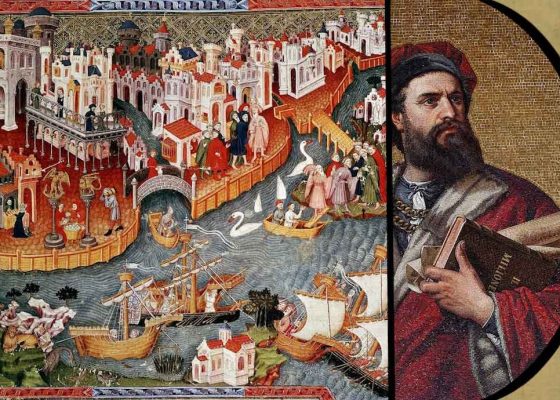
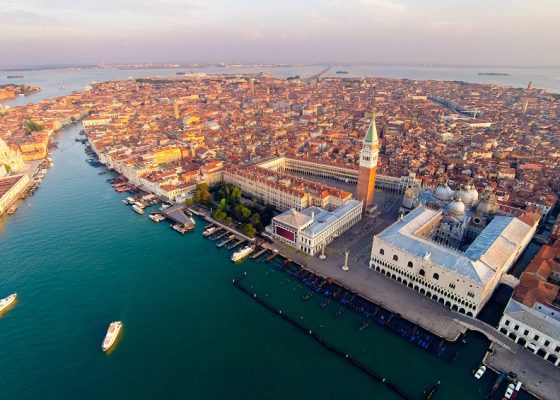


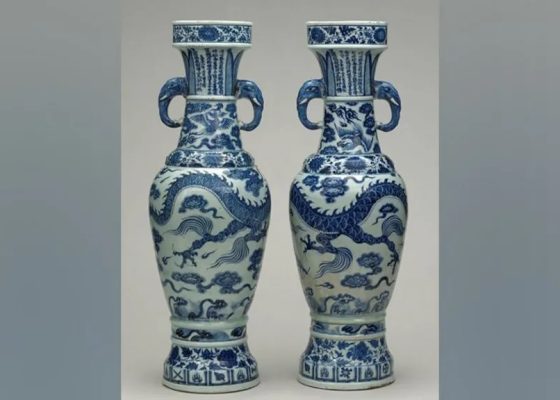
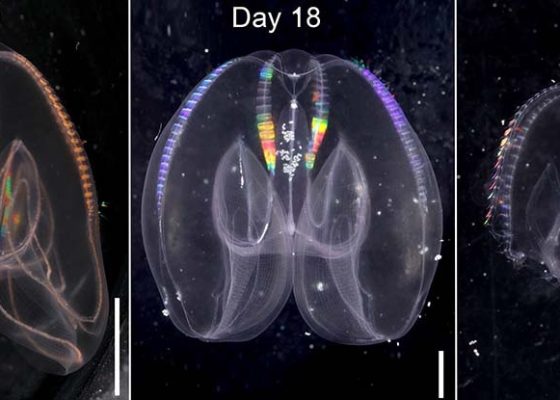




Cancel anytime


Using our website
You may use the The Middle Land website subject to the Terms and Conditions set out on this page. Visit this page regularly to check the latest Terms and Conditions. Access and use of this site constitutes your acceptance of the Terms and Conditions in-force at the time of use.
Intellectual property
Names, images and logos displayed on this site that identify The Middle Land are the intellectual property of New San Cai Inc. Copying any of this material is not permitted without prior written approval from the owner of the relevant intellectual property rights.
Requests for such approval should be directed to the competition committee.
Please provide details of your intended use of the relevant material and include your contact details including name, address, telephone number, fax number and email.
Linking policy
You do not have to ask permission to link directly to pages hosted on this website. However, we do not permit our pages to be loaded directly into frames on your website. Our pages must load into the user’s entire window.
The Middle Land is not responsible for the contents or reliability of any site to which it is hyperlinked and does not necessarily endorse the views expressed within them. Linking to or from this site should not be taken as endorsement of any kind. We cannot guarantee that these links will work all the time and have no control over the availability of the linked pages.
Submissions
All information, data, text, graphics or any other materials whatsoever uploaded or transmitted by you is your sole responsibility. This means that you are entirely responsible for all content you upload, post, email or otherwise transmit to the The Middle Land website.
Virus protection
We make every effort to check and test material at all stages of production. It is always recommended to run an anti-virus program on all material downloaded from the Internet. We cannot accept any responsibility for any loss, disruption or damage to your data or computer system, which may occur while using material derived from this website.
Disclaimer
The website is provided ‘as is’, without any representation or endorsement made, and without warranty of any kind whether express or implied.
Your use of any information or materials on this website is entirely at your own risk, for which we shall not be liable. It is your responsibility to ensure any products, services or information available through this website meet your specific requirements.
We do not warrant the operation of this site will be uninterrupted or error free, that defects will be corrected, or that this site or the server that makes it available are free of viruses or represent the full functionality, accuracy and reliability of the materials. In no event will we be liable for any loss or damage including, without limitation, loss of profits, indirect or consequential loss or damage, or any loss or damages whatsoever arising from the use, or loss of data, arising out of – or in connection with – the use of this website.
Last Updated: September 11, 2024
New San Cai Inc. (hereinafter “The Middle Land,” “we,” “us,” or “our”) owns and operates www.themiddleland.com, its affiliated websites and applications (our “Sites”), and provides related products, services, newsletters, and other offerings (together with the Sites, our “Services”) to art lovers and visitors around the world.
This Privacy Policy (the “Policy”) is intended to provide you with information on how we collect, use, and share your personal data. We process personal data from visitors of our Sites, users of our Services, readers or bloggers (collectively, “you” or “your”). Personal data is any information about you. This Policy also describes your choices regarding use, access, and correction of your personal information.
If after reading this Policy you have additional questions or would like further information, please email at middleland@protonmail.com.
PERSONAL DATA WE COLLECT AND HOW WE USE IT
We collect and process personal data only for lawful reasons, such as our legitimate business interests, your consent, or to fulfill our legal or contractual obligations.
Information You Provide to Us
Most of the information Join Talents collects is provided by you voluntarily while using our Services. We do not request highly sensitive data, such as health or medical information, racial or ethnic origin, political opinions, religious or philosophical beliefs, trade union membership, etc. and we ask that you refrain from sending us any such information.
Here are the types of personal data that you voluntarily provide to us:
As a registered users or customers, you may ask us to review or retrieve emails sent to your business. We will access these emails to provide these services for you.
We use the personal data you provide to us for the following business purposes:
Information Obtained from Third-Party Sources
We collect and publish biographical and other information about users, which we use to promote the articles and our bloggers who use our sites. If you provide personal information about others, or if others give us your information, we will only use that information for the specific reason for which it was provided.
Information We Collect by Automated Means
Log Files
The site uses your IP address to help diagnose server problems, and to administer our website. We use your IP addresses to analyze trends and gather broad demographic information for aggregate use.
Every time you access our Site, some data is temporarily stored and processed in a log file, such as your IP addresses, the browser types, the operating systems, the recalled page, or the date and time of the recall. This data is only evaluated for statistical purposes, such as to help us diagnose problems with our servers, to administer our sites, or to improve our Services.
Do Not Track
Your browser or device may include “Do Not Track” functionality. Our information collection and disclosure practices, and the choices that we provide to customers, will continue to operate as described in this Privacy Policy, whether or not a “Do Not Track” signal is received.
HOW WE SHARE YOUR INFORMATION
We may share your personal data with third parties only in the ways that are described in this Privacy Policy. We do not sell, rent, or lease your personal data to third parties, and We does not transfer your personal data to third parties for their direct marketing purposes.
We may share your personal data with third parties as follows:
There may be other instances where we share your personal data with third parties based on your consent.
HOW WE STORE AND SECURE YOUR INFORMATION
We retain your information for as long as your account is active or as needed to provide you Services. If you wish to cancel your account, please contact us middleland@protonmail.com. We will retain and use your personal data as necessary to comply with legal obligations, resolve disputes, and enforce our agreements.
All you and our data are stored in the server in the United States, we do not sales or transfer your personal data to the third party. All information you provide is stored on a secure server, and we generally accepted industry standards to protect the personal data we process both during transmission and once received.
YOUR RIGHTS/OPT OUT
You may correct, update, amend, delete/remove, or deactivate your account and personal data by making the change on your Blog on www.themiddleland.com or by emailing middleland@protonmail.com. We will respond to your request within a reasonable timeframe.
You may choose to stop receiving Join Talents newsletters or marketing emails at any time by following the unsubscribe instructions included in those communications, or you can email us at middleland@protonmail.com
LINKS TO OTHER WEBSITES
The Middle Land include links to other websites whose privacy practices may differ from that of ours. If you submit personal data to any of those sites, your information is governed by their privacy statements. We encourage you to carefully read the Privacy Policy of any website you visit.
NOTE TO PARENTS OR GUARDIANS
Our Services are not intended for use by children, and we do not knowingly or intentionally solicit data from or market to children under the age of 18. We reserve the right to delete the child’s information and the child’s registration on the Sites.
PRIVACY POLICY CHANGES
We may update this Privacy Policy to reflect changes to our personal data processing practices. If any material changes are made, we will notify you on the Sites prior to the change becoming effective. You are encouraged to periodically review this Policy.
HOW TO CONTACT US
If you have any questions about our Privacy Policy, please email middleland@protonmail.com
The Michelin brothers created the guide, which included information like maps, car mechanics listings, hotels and petrol stations across France to spur demand.
The guide began to award stars to fine dining restaurants in 1926.
At first, they offered just one star, the concept was expanded in 1931 to include one, two and three stars. One star establishments represent a “very good restaurant in its category”. Two honour “excellent cooking, worth a detour” and three reward “exceptional cuisine, worth a
Thank you for your participation,
please Log in or Sign up to Vote

123Sign in to your account
3 Responses